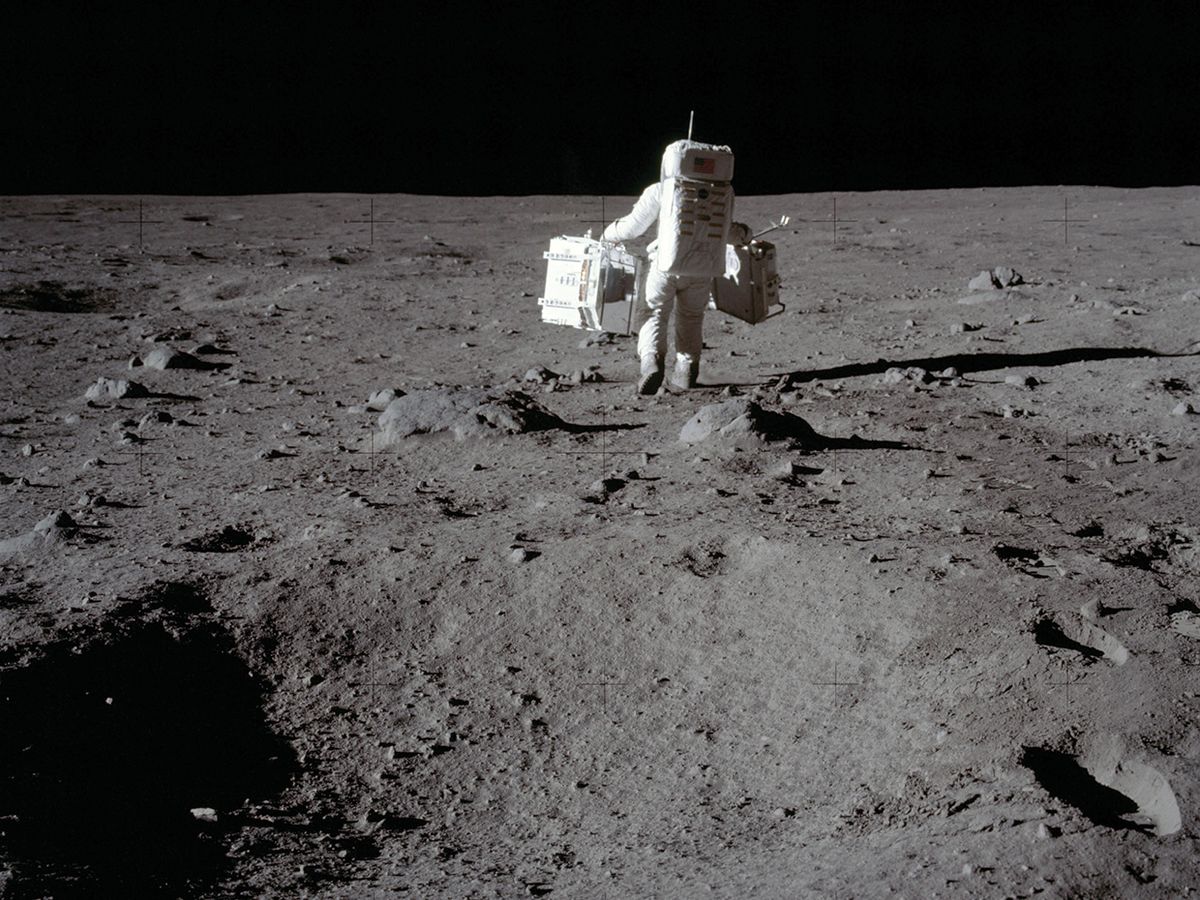The 50th anniversary of the first human moon landing is upon us (20 July, to be exact). This roughly 772,000-kilometer round-trip expedition is being celebrated all year long—books, movies, commemorative magazine issues, and special events abound.
In May, IEEE gave its President’s Award to the remarkable and indomitable Katherine Johnson, who helped calculate, by hand, the trajectory for the Apollo 11 lunar landing mission. If you have US $9 million dollars to spare, you can drop by Christie’s in New York City on 18 July to bid in the auction of Apollo 11’s Lunar Module Timeline Book, with its three-hole-punched pages and hand-checked flight plan. Don helmet and gloves—check. Test cabin regulator—check.
In case you’ve managed to miss what all the fuss is about: On 20 July 1969, NASA’s Neil Armstrong and Buzz Aldrin landed on the moon, while Command Module Pilot Michael Collins circled above them with their ride home. It was the culmination of years of human effort, interrupted by delays, setbacks, and the assassination of U.S. president John F. Kennedy in 1963. The mission was carried out as the Vietnam War, the war on poverty, and the civil rights and women’s movements were all in full swing.
As the Apollo 11 retrospective swirls around us, we’ve decided to take a look at today’s efforts to return to the moon, and this time, to build habitable lunar bases. What will it take? Which rockets and landers will get us there? Dive into the tech that will enable humanity’s first space settlement in our special report: Project Moon Base.
Traveling to the moon is hard enough, but attempting to live on the lunar surface presents even greater challenges. It’s been compared with living in an Antarctic research station or on a nuclear submarine that remains submerged for months on end.
The moon, for all its luminescent beauty on sultry summer evenings or frosty winter nights, is one mean rock to live on. It has no atmosphere, little gravity, and cuttingly abrasive sand. The surface is blasted by cosmic radiation and is, every lunar day, both extremely hot and extremely cold. There is water at its poles, but it’s frozen. Yet the engineers and architects designing moon habitats are confident that they can overcome these and other sobering challenges, as you’ll see in “Engineers and Architects Are Already Designing Lunar Habitats.”
Despite short bursts of excitement about moon landings and space-shuttle flights, antipathy about human space travel has coexisted with enthusiasm for it since the first humans escaped gravity’s shackles in the early 1960s. Why are we spending time, money, and energy to send ourselves into space, while there are so many problems to take care of here on Planet Earth?
People forget that pictures of Earth, taken from the moon, helped spur the modern environmental movement. I think about what the Chinese artist Ai Weiwei said, commenting on the plans of Japanese billionaire Yusaku Maezawa to bring artists with him on SpaceX’s first trip around the moon: “Without knowing other celestial bodies, we cannot truly understand what our own planet is about.”
This article appears in the July 2019 print issue as “Home, Sweet Moon?”
